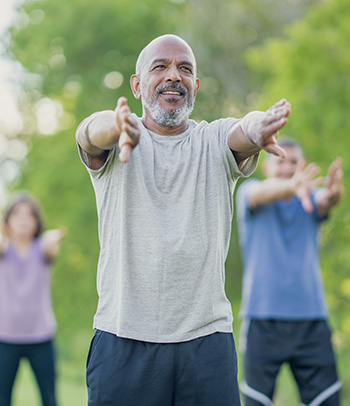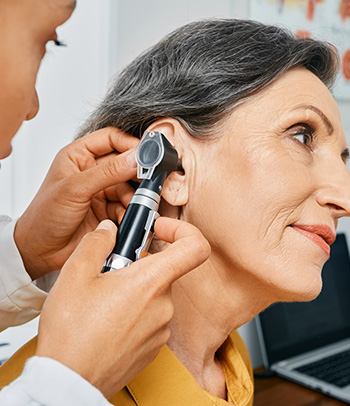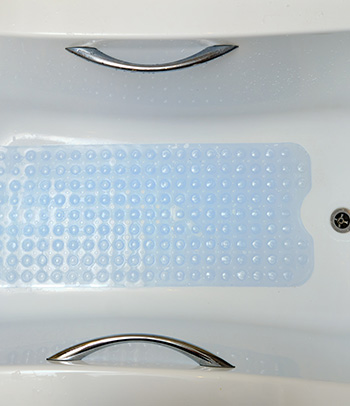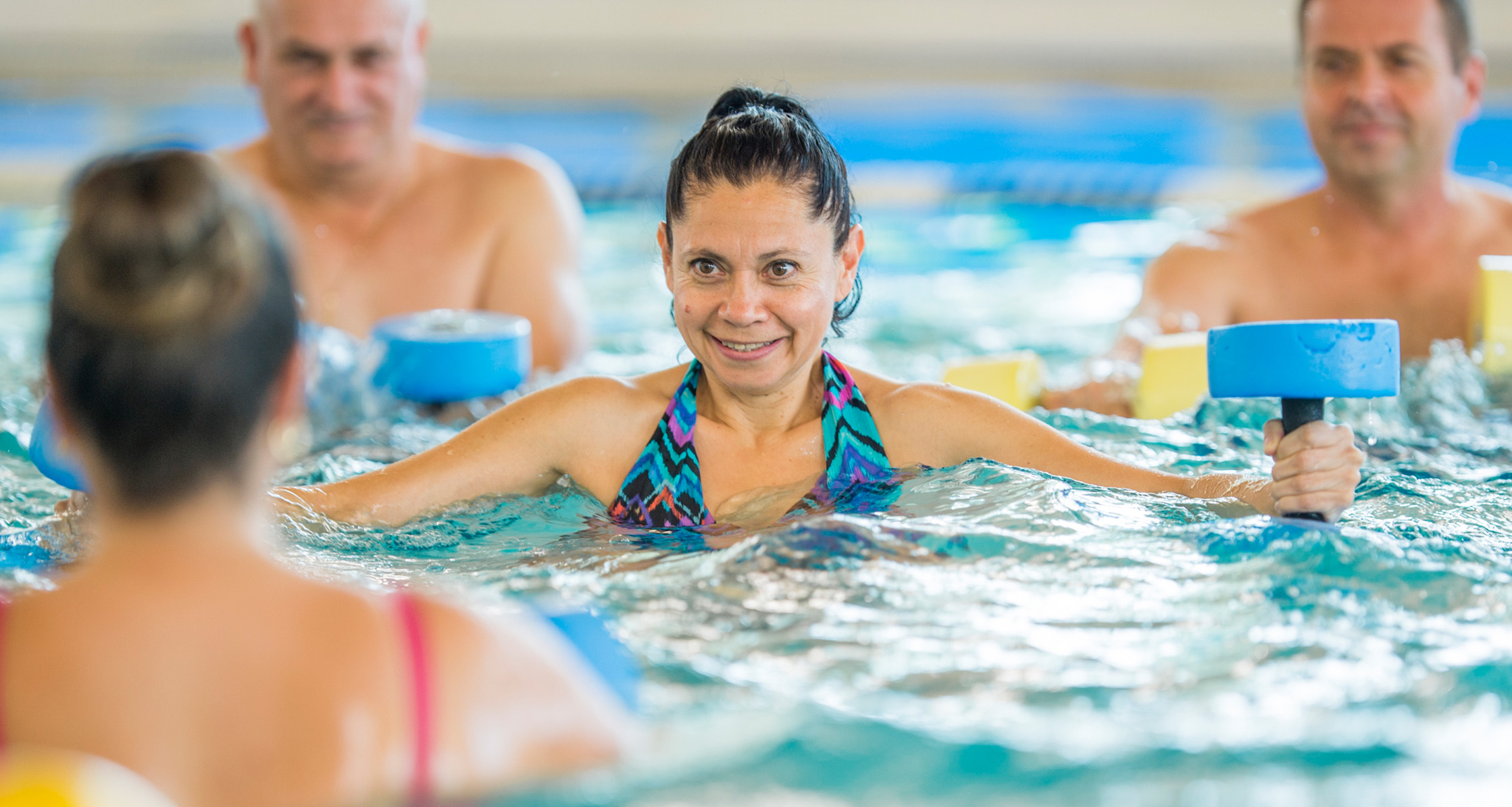Falls don’t have to be an inevitable part of aging. There are several ways to reduce your risk of falling.
Each year, millions of older people fall. According to the Centers for Disease Control and Prevention (CDC), more than one out of four people 65 or older fall each year. A fall can be a simple accident – slipping on a wet surface or tripping over the corner of a rug. But falls can be a serious threat to the health of older adults.
The good news is that falls don’t have to be an inevitable part of aging. There are several ways to reduce your risk of falling.
Learn more about the dangers of falling, whether or not you’re at risk and what you can do to reduce your risk of falling.
Why Are Falls So Dangerous?
According to the CDC, falls among adults 65 and older caused over 36,000 deaths in 2020, making it the leading cause of injury death for that age group. Even when falls aren’t deadly, many of them cause serious injuries such as broken bones or a head injury. Here are some of the dangers to consider:
- Falls can cause broken bones, like wrist, arm, ankle and hip fractures. More than 95% of hip fractures are caused by falling.
- Falls are the most common cause of traumatic brain injury (TBI).
- Falling once can double your chances of falling again.
- Injuries from a fall can make it hard for you to get around, live on your own or do everyday activities independently.
What Are the Risk Factors?
Of course, anyone can slip, trip or fall, but there are certain risk factors that make it more likely, including:
- Lower body weakness
- Vitamin D deficiency
- Difficulties with walking and balance
- Use of certain medications, such as some sedatives or antidepressants
- Vision problems
- Foot pain that causes you to limp or become unsteady
- Improper footwear such as high heels, slippery soles or backless shoes
- Home hazards such as broken or uneven steps, throw rugs and clutter
- Certain chronic health conditions, such as diabetes, arthritis or high and low blood pressure, which can cause problems with movement, balance or vision
- Poor hearing
- Cognitive impairment or certain types of dementia
- Age-related muscle loss
Many of the factors listed above can be modified or corrected. Check out the tips in the following section to reduce your risk of falling.
How Can I Reduce My Risk of Falling?
- Talk to your health care provider.
- Discuss your risk of falling. You can use a fall assessment tool like this one from the National Council on Aging to determine your risk level and go over it with your health care provider.
- Share any symptoms you’re concerned about, such as leg numbness or dizziness.
- Complete a medication review together. Talk about each medication you’re taking, including any over-the-counter ones. As you age, the way medications work in your body can change, so be sure you’re taking the correct amount. Go over side effects that may contribute to an increased risk of falling such as dizziness, sleepiness or balance issues.
- Ask about your vitamin D levels. Your health care provider can use a simple blood test to check whether you’re getting enough vitamin D. Without enough of it, you may increase your risk of falling due to muscle and bone weakness, or osteoporosis.
- Tell your provider if you’ve fallen in the past or if you’re worried about it. A fall, or even extreme worry about falling, may increase your risk for future falls.
- Work on your strength and balance.
- Improve your balance with exercises such as yoga and increase your strength with tai chi and Pilates. Each of these disciplines includes poses designed to improve your flexibility, strength and balance.
- Build your strength. Being strong can help you stay steady on your feet and better manage a fall if it happens. Consider lifting weights or using body weight exercises or resistance bands to help increase your muscle mass.
- Remain active.
- Keep your joints and tendons flexible and slow bone loss as you age with activities such as brisk walking, cycling, swimming, climbing stairs and more.
- Decrease your risk for major injury from a fall by building strength, improving your balance and increasing your endurance.
- Check out this article for ways to stay active at any age.

- Have your eyes and ears checked.
- Get a comprehensive eye exam at least once a year.
- Update your glasses or contacts as needed.
- Use sunglasses or a hat to make it easier to see in the sun.
- Have your health care provider check your ears. Inner ear problems can cause balance issues, and hearing loss may increase your chances of falling.
- Get the right nutrition and stay hydrated.

- Eat throughout the day. If you don’t eat enough, you may lose energy and become faint or fatigued, which could contribute to a fall. Starting with a healthy breakfast is a great way to jumpstart your day.
- Get enough of the right nutrients, including enough vitamin D, calcium and potassium – all of which can help your muscles and bones stay healthy.
- Stay hydrated. If you don’t drink enough, you may become dehydrated, which can lead to lightheadedness or dizziness. If you’re struggling to drink enough water throughout the day, check out these tips for staying hydrated.
- Avoid smoking and limit your alcohol consumption. Tobacco may decrease your muscle and bone mass over time, and alcohol can affect your balance and coordination.
- Wear the right footwear.
- Wear footwear that helps reduce your risk of falling. Your shoes should have enough support and a good grip on the bottom to decrease your chances of falling.
- Avoid wearing socks or slippers with a smooth bottom.
- Make your home safer.

- Get rid of clutter and remove things from the floor you could easily trip over like shoes, books and clothes.
- Add grab bars inside and outside the tub or shower and next to the toilet.
- Put railings on both sides of the stairs.
- Ensure your home is well lit. Use bright light bulbs and light up any dark areas, such as hallways, stairs or walkways.
- Get rid of rugs or prevent your rugs from slipping with a non-slip mat.
- Put things you need regularly within your reach so you’re not using a step stool or reaching up when you’re off balance.
- Use non-slip mats in the tub or shower.
- Check out the National Council on Aging’s detailed list of how to make your home safer room by room.
What Resources Are Available?
- The Department of Veterans Affairs (VA) has several resources that can help Veterans reduce their risk of falling, including support for staying active, building strength and balance, and learning how to eat nutritiously. Check out VA’s Whole Health program to begin building a personalized plan to improve your health. Try out tai chi or yoga, discuss a plan to incorporate more vitamins into your diet and more.
- The CDC offers several resources related to fall prevention, including information on aging without injury, information on medication safety and much more.
- The National Institute on Aging provides helpful information such as exercises that can improve your strength, endurance and balance, how to take medications safely, what to do if you fall and more.







